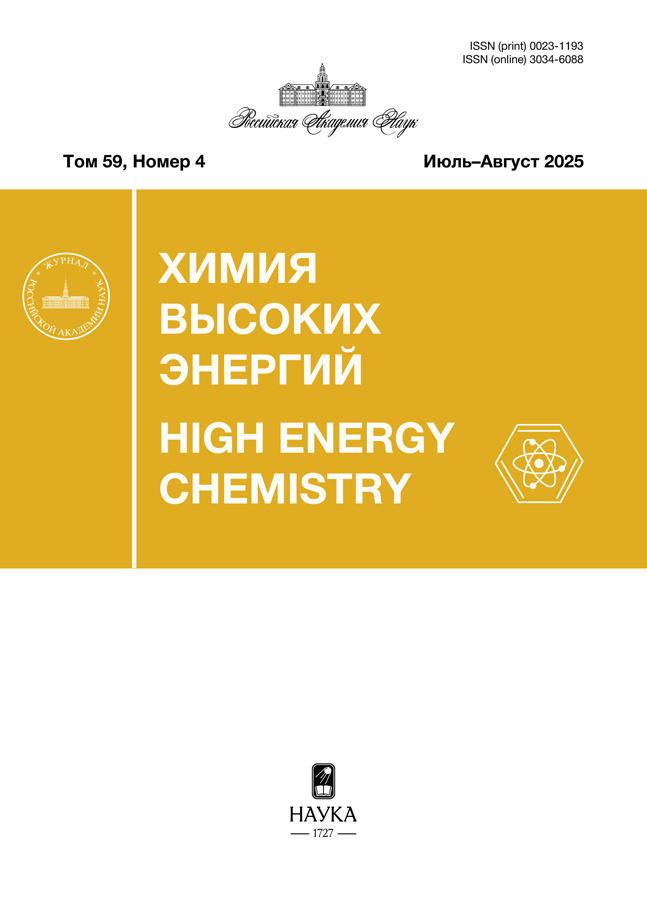Равномерность электронно-лучевого сшивания полиэтилена в зависимости от распределения поглощенной дозы излучения
- Авторы: Попова А.В.1, Артамонова К.А.1, Блуденко А.В.1, Холодкова Е.М.1, Власов С.И.1, Пономарев А.В.1
-
Учреждения:
- ФГБУН “Институт физической химии и электрохимии им. А.Н. Фрумкина” РАН
- Выпуск: Том 59, № 4 (2025)
- Страницы: 229–234
- Раздел: РАДИАЦИОННАЯ ХИМИЯ
- URL: https://consilium.orscience.ru/0023-1193/article/view/687705
- DOI: https://doi.org/10.31857/S0023119325040061
- EDN: https://elibrary.ru/ayadnq
- ID: 687705
Цитировать
Полный текст
Аннотация
Исследовано сшивание полиэтилена трубных сортов под действием 900 кэВ электронов при поглощенной дозе от 50 до 400 кГр в присутствии антиоксидантов и сшивающего агента. Степень сшивания полиэтилена измерялась по содержанию гель-фракции, определяемой путем его экстракции в ксилоле. Показано, что во всех случаях степень сшивания 60% достигается при дозе около 100 кГр. Стандартную методику определения гель-фракции целесообразно сочетать с визуальным контролем образцов для выявления условий образования чрезмерно легкоплавкого материала. Показано, что неравномерность степени сшивания на уровне ±7% может достигаться при неравномерности дозы до ±50%.
Ключевые слова
Полный текст
Об авторах
А. В. Попова
ФГБУН “Институт физической химии и электрохимии им. А.Н. Фрумкина” РАН
Email: ponomarev@ipc.rssi.ru
Россия, Москва
К. А. Артамонова
ФГБУН “Институт физической химии и электрохимии им. А.Н. Фрумкина” РАН
Email: ponomarev@ipc.rssi.ru
Россия, Москва
А. В. Блуденко
ФГБУН “Институт физической химии и электрохимии им. А.Н. Фрумкина” РАН
Email: ponomarev@ipc.rssi.ru
Россия, Москва
Е. М. Холодкова
ФГБУН “Институт физической химии и электрохимии им. А.Н. Фрумкина” РАН
Email: ponomarev@ipc.rssi.ru
Россия, Москва
С. И. Власов
ФГБУН “Институт физической химии и электрохимии им. А.Н. Фрумкина” РАН
Email: ponomarev@ipc.rssi.ru
Россия, Москва
А. В. Пономарев
ФГБУН “Институт физической химии и электрохимии им. А.Н. Фрумкина” РАН
Автор, ответственный за переписку.
Email: ponomarev@ipc.rssi.ru
Россия, Москва
Список литературы
- Burillo G., Clough R.L., Czvikovszky T., Guven O., Le Moel A., Liu W., Singh A., Yang J., Zaharescu T. // Radiat. Phys. Chem. 2002. V. 64. P. 41.
- Dorigato A. // Adv. Ind. Eng. Polym. Res. 2021. V. 4. P. 53.
- Geyer R., Jambeck J.R., Law K.L. // Sci. Adv. 2017. V. 3. P. e1700782.
- Chmielewski A.G. // Radiat. Phys. Chem., 2023. V. 213. P. 111233.
- Ponomarev A.V., Gohs U., Ratnam C.T., Horak C. // Radiat. Phys. Chem. 2022. V. 201. P. 110397.
- Ponomarev A.V. // High Energy Chem. 2020. V. 54. P. 194.
- Woods R., Pikaev A. // Applied Radiation Chemistry. Radiation Processing. NY: Wiley, 1994.
- Pikaev A.K. // High Energy Chem. 2000. V. 34.
- Ponomarev A.V. // Radiat. Phys. Chem. 2016. V. 118. P. 138.
- Albrecht V., Simon F., Reinsch E., Schünemann R., Gohs U., Kretzschmar B., Peuker U.A. // Recover. Recycl. Technol. Worldw. 2016. V. 2. P. 36.
- Cleland M., Galloway R., Genin F., Lindholm M. // Radiat. Phys. Chem. 2002. V. 63. P. 729.
- Perrin C., Griseri V., Laurent C. // IEEE Trans. Dielectr. Electr. Insul. 2008. V. 15. P. 958.
Дополнительные файлы
















